| Designation: | M987 |
 |
|---|---|---|
| Manufacturer: | Rheinmetall Canada Inc | |
| Product type: | Armoured Vehicles | |
| Name: | Tracked armoured personnel carrier |
M987 Fighting Vehicle System (FVS)
In order to support the new generation of M1 tanks and M2/M3 Bradleys. the Army issued a requirement for a new series of combat support vehicles which could keep up with these new AFVs. Using Bradley components. FMC developed the M987 Fighting Vehicle System, The Bradley components included the power train and suspension system In a chassis which is somewhat longer than the Bradley. The 500 horsepower engine is center mounted under the engine cab which can be tilled forward for easy access to the engine. Behind the cab/engine area is the payload area which can be used in a number of different configurations.
The cab provides seating for the driver and two additional personnel. Aluminum armor provides protection against various small caliber weapons and the cab is lilted with an overpressure ventilation system for operation in an NBC enviroment. Visibility through the front three windows is fairly good, and if under fire, folding shields can be lowered to protect the crew, Doors on each side have windows which can be covered with a hinged armor flap. The driving controls are logically placed and designed for easy use. while the instrument panel is labeled in international symbols and uses both English and metric units of measurement. An additional hatch in the roof allows for ventilation and observation when in a reasonably safe situation.
The M987 has been used as the basis for a number of vehicles with a wide range of functions. Some have been in service for some lime, while others are still under development The following are the current vehicles along with a short description of their function:
- M933 Multiple Launch Rocket System (MLRS)
Initially known as the General Support Rocket System, this vehicle came about following a 1976 requirement issued by the Army for a vehicle to provide battlefield saturation fire using large caliber rockets. Competition for the contract was between Boeing and Vought each developing their own specific system. The Army selected the Vought proposal, combining it with the FVS under the designation M933. A large, boxlike container on the bed of the FVS houses twelve unguided nine inch (227mm) rockets which can be fitted with a variety of warheads. Housed within ihe container is a built-in derrick which is used to rapidly reload Ihe unit using pallatized rounds. Reloading can be accomplished by a single crewman adding to the versatility of the system. The launchcrcan be elevated and traversed as needed for fire missions. The MLRS went into U.S. service in ihe mid-1980s and was also selected for use by Britain, Germany. Italy and the Netherlands. It was given its baptism of fire during the Persian Gulf War where it was used to provide heavy fire against Iraqi bunkers, tank concentrations, and other targets of opportunity.
- Forward Area Armored Logistics System (FAALS)
This FVS variant was designed to give armored units a logistics vehicle which could operate in a forward battlefield situation. A large armored, box-like structure was mounted on the bed of the FVS which could carry either ammunition. fuel or other necessary provisions needed to keep forward units supplied. A crane was built into the front right corner of the box to help unload the needed items directly to the vehicle being resupplied. cutting down on the exposure of both crews. Large hatches allow for speedy unloading, further cutting down on exposure to hostile fire.
- Armored Maintenance Vehicle (AMV)
Similar in profile to the FAALS. the AMV was designed to allow maintenance to be done under lire in a hostile environment. The vehicle can change power plants, gun tubes and weapons stations with ils 7.5 ion capacity crane which is fitted at the rear of the vehicle. Ils large internal stowage area allows it to carry critically needed pans, repair materials and ihe tools needed to repair damaged AFVs in the forward battle area, thus reducing the need 10 retrieve these vehicles and transport them to ihe rear area. For self-defense. the vehicle is fined with a. SOcaliber machine gun mounted over the right side of the cab. along with smoke grenade launchers for concealment.
- Electronic Fighting Vehicle System (EFVS)
In order to provide a mobile protective home for commanders with forward units, FMC developed the EFVS. This vehicle allows battlefield commanders to have access to critical information and disseminate it as needed. IMC designed this vehicle to cany a wide variety of communications packages, electronic components and computers which allow the EFVS to function under fire while providing command, control, communications and intelligence OH a timely basis for forward units. The module provides ballistic protection for the crew from small arms fire, artillery fragments, and incorporates an NBC over pressure protection system. In addition, armor kits arc available for additional protection in high threat areas. It can operate totally closed up for up to two days with fuel resupply and has the ability to operate on the move using the primary power unit. To facilitate its mission, the unit is fitted with a remotely activated quick-erect mast at the rear which can be extended out to seventy feet.
- Firefighter (Block in)
This variant was designed to use a Hughes phased array surveillance radar unit to detect enemy artillery- mortar and rocket positions and bring quick, rapid counter-battery fire upon their positions before they can move. The crew and their gear are protected against small arms fire and shrapnel in an armored module. The radar array is mounted on top of the module and is elevated as needed. When lowered the unit is only marginally higher then the similar shaped EFVS.
- Long Range Anti-Tank Program (LRAT)
Developed in conjunction with Martin Marietta, this vehicle mounts elevated sensor systems designed to provide troops in the field with the ability to locate and identify distant targets. The vehicle uses a fifty foot telescoping mast linked to a Martin Marietta Target Acquisition and Designation System (TADS). Tests were also conducted to see if it was feasible to integrate the Hellfire missile system into the unit, to see if there was a potential for the vehicle to act as an infantry anti-tank unit which could destroy enemy armor while remaining under cover. Early results were encouraging, but as of yet no vehicles have been procured for service.
|
||||||
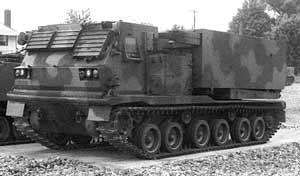 |
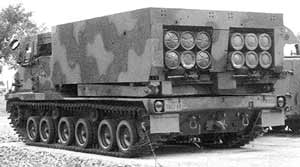 |
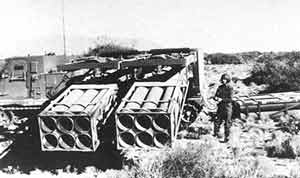 |
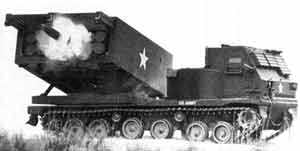 |
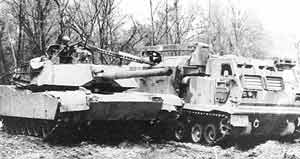 |
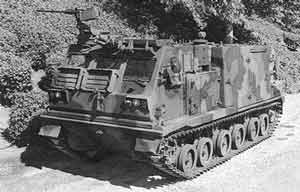 |
 |
 |
